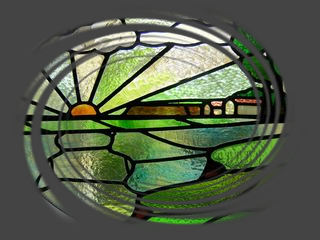Digital Cameras
Some of you may be interested in the camera setups in use, especially in the kit used to take the caving pictures.
All of these pictures were taken on my Olympus E series DSLR's and the new mirrorless Olympus cameras.
I have used 5 of the SLR bodies the E-500 and the E-510, both of which are excellent cameras for many types of photography, and more recently the E-30 and E-620
More recently the EM10 Mk II and EM1 MkII in the mirrorless range of camera and I have to say that I will not be going back to DLSR's the mirrorlesss cameras give a hige range of additional benefits. The key one is that the changes you make on terms of exposure etc., are visible through th ehigh quality electronic viewfinder.
In Terms of lenses I have used a wide range of the excellent Zukio lenses with the 7-14, 11-22; 14-42; 14-54; 17.5-45; 40-150; 20-200; 70-300 focal lengths.
To supplement these I also used at times the EC-14 1.4 teleconverter which increases range and flexibility without adding a lot more to your camera bag.
Since moving to the mirrorless system I have limited myself to just 2 lenses. The incredible 12-100 IS pro lens is used over 90% of the time with the 60mm macro lens for specific uses. The 12-100 is an incredible lens and I don't find the need for other lenses in this range any more. if I want to go wider I will almost certainly stitch images because the software to do that is now so good (and free)
if you want to know a lot more about Olympus cameras and especially a lot of excellent advice from people who know a lot more than me and who are better photographers the best resource on the internet is the Olympus E-group forum
Caving Cameras
The caving pictures are mostly taken on the E-500 for the simple reason that it's an extreme environment and that it's my older camera. update that is now dead so the E-510 is going to fill in this slot now)
People ask whether DSLR's or compact cameras are better for caving and it's not simple to give one answer. It depends on what you are doing and what results you want to get. I have DSLR and I prefer the quality of lenses and the control I get from the cameras so i use them.
For cave exploration a compact is excellent as it can be carried at all times, but many of the compact cameras do not have the capacity for external flashguns via hot shoe or slave units and for good quality pictures this ia a really important feature. DSLR's such as the Olympus range have the ability to change lenses, but that's not generally you want to do in the underground environment. If you do want to do that then the Olympus range is probably the only one with an anti-dust system that is up to the job. Other manufacturers are getting there, but not as good yet IMO.
Almost all pictures in the caving gallery are taken with Flash, but it is now possible to take pictures using available light in some extreme conditions which is why you will see in the misc gallery a picture taken back ni 2006 on my E-500 of Gaping Ghyll, the largest underground chamber in the UK. This picture was taken on one of the public open days (winch meet) using the floodlights installed into the cave by the Bradford Caving club. It's never going to win anything as it's noisy, but it shows how this equipment can be used to capture something that would not be possible under film without a massive amount more equipment and expense. If I was to repeat this using the EM1 Mk II the results would be an incredibly level better! There are also a number of pictures in the Dinas Silica Mines section which we were lit using a Scurion Light with the camera open on a tripod for 6-13 seconds
The Flash used in the caving pictures are mostly taken with a single FL-36 Flashgun which is synchronized to the camera with a CB-05 flash synch cord. However, more recently, I'm using a set of FL-36 guns and FL-50 guns synchronized with cactus wireless slave triggers
For caving my cameras and accessories are carried in one of the excellent pelibox waterproof containers.
If you want to know more about underground photography I recommend the books by Chris Howes of Wild Places including the excellent manual Images Below which include quite a few pictures of me and also pictures where I am part of the team who created them. I'm honored to have been able to be part of Chris's creative team for many years.
Pre-Digital Cameras
In my pre-digital age my photography equipment was from the Pentax range.
I've been asked why I switched and I have to admit that it was hard as I was very happy with both the camera bodies and the optics that I had from Pentax. The simple answer was right functionality at the right time, at the right price and buying into a system that knew where it was going. I know wthat since I moved into Olympus they have continued to develop more excellent equipment, and their latest offerings are still a lot better than I am so I am still happy with the decisions I have made
